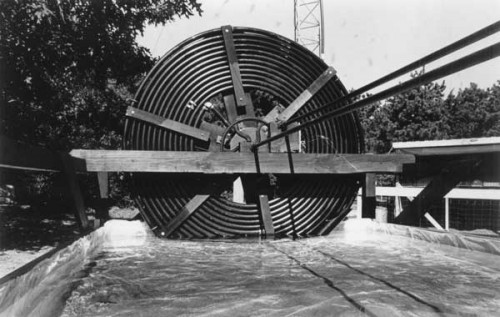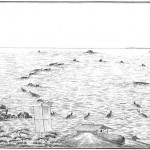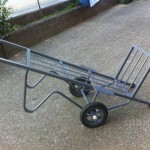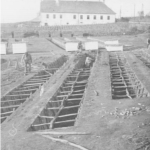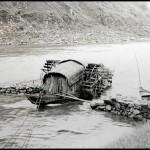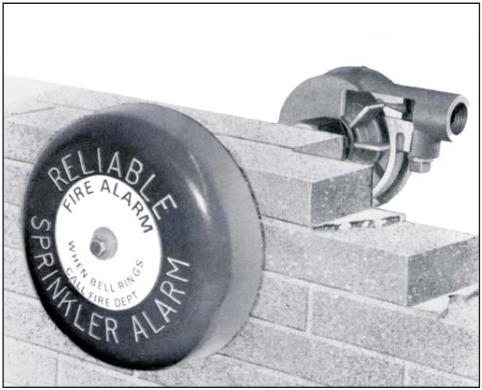 Mid-nineteenth century, water motors operated by tap water became a valuable power source in addition to hand and foot powered machines. Most of these small-scale water motors for indoor use were Pelton turbines, which are up to 90% efficient regardless of their size.
Mid-nineteenth century, water motors operated by tap water became a valuable power source in addition to hand and foot powered machines. Most of these small-scale water motors for indoor use were Pelton turbines, which are up to 90% efficient regardless of their size.
A demonstration of how water power may be used efficiently even on a very small scale is the water-powered fire alarm. The device is still for sale today. Buildings protected by sprinkler systems often have outside alarm bells that are activated by very small Pelton turbines on the other side of the wall.
The hydro-mechanical device signals the flow of water in an automatic sprinkler system. The main flow of water lifts a valve that sends a small amount of water to the little turbine, sounding the bell. The great advantage for fire protection is that the system works independent of electricity.
Picture: a water-powered fire alarm. Source: The Reliable Automatic Sprinkler Co. Via The Museum of Retrotechnology.
